
R Deep Learning Projects
¥63.21
5 real-world projects to help you master deep learning concepts About This Book ? Master the different deep learning paradigms and build real-world projects related to text generation, sentiment analysis, fraud detection, and more ? Get to grips with R's impressive range of Deep Learning libraries and frameworks such as deepnet, MXNetR, Tensorflow, H2O, Keras, and text2vec ? Practical projects that show you how to implement different neural networks with helpful tips, tricks, and best practices Who This Book Is For Machine learning professionals and data scientists looking to master deep learning by implementing practical projects in R will find this book a useful resource. A knowledge of R programming and the basic concepts of deep learning is required to get the best out of this book. What You Will Learn ? Instrument Deep Learning models with packages such as deepnet, MXNetR, Tensorflow, H2O, Keras, and text2vec ? Apply neural networks to perform handwritten digit recognition using MXNet ? Get the knack of CNN models, Neural Network API, Keras, and TensorFlow for traffic sign classification ? Implement credit card fraud detection with Autoencoders ? Master reconstructing images using variational autoencoders ? Wade through sentiment analysis from movie reviews ? Run from past to future and vice versa with bidirectional Long Short-Term Memory (LSTM) networks ? Understand the applications of Autoencoder Neural Networks in clustering and dimensionality reduction In Detail R is a popular programming language used by statisticians and mathematicians for statistical analysis, and is popularly used for deep learning. Deep Learning, as we all know, is one of the trending topics today, and is finding practical applications in a lot of domains. This book demonstrates end-to-end implementations of five real-world projects on popular topics in deep learning such as handwritten digit recognition, traffic light detection, fraud detection, text generation, and sentiment analysis. You'll learn how to train effective neural networks in R—including convolutional neural networks, recurrent neural networks, and LSTMs—and apply them in practical scenarios. The book also highlights how neural networks can be trained using GPU capabilities. You will use popular R libraries and packages—such as MXNetR, H2O, deepnet, and more—to implement the projects. By the end of this book, you will have a better understanding of deep learning concepts and techniques and how to use them in a practical setting. Style and approach This book's unique, learn-as-you-do approach ensures the reader builds on his understanding of deep learning progressively with each project. This book is designed in such a way that implementing each project will empower you with a unique skillset and enable you to implement the next project more confidently.
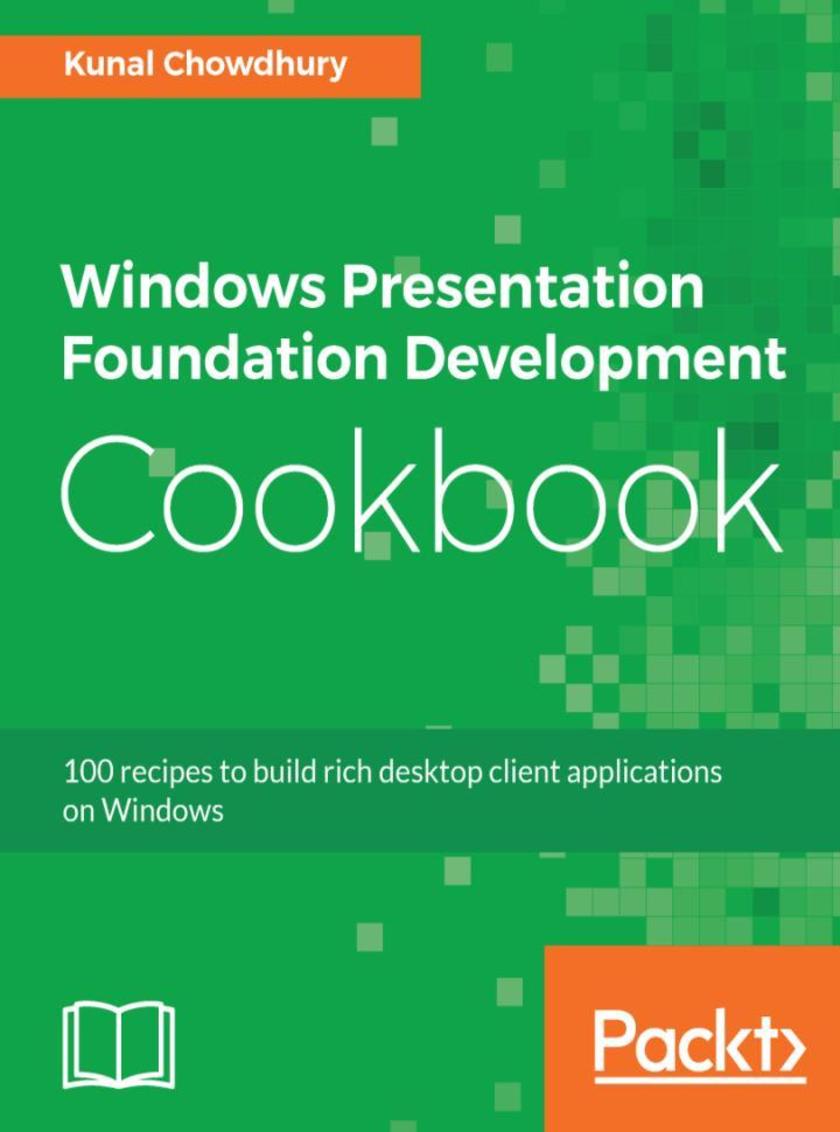
Windows Presentation Foundation Development Cookbook
¥108.99
Gain comprehensive insight into WPF mechanics and capabilities. About This Book ? Gain a strong foundation in WPF features and patterns ? Leverage the MVVM pattern to build decoupled, maintainable apps ? Increase efficiency through Performance tuning and UI automation Who This Book Is For The book is intended for developers who are relatively new to WPF (Windows Presentation Foundation), or those who have been working with WPF for some time, but want to get a deeper understanding of its foundation and concepts to gain practical knowledge. Basic knowledge of C# and Visual Studio is assumed. What You Will Learn ? Understand the fundamentals of WPF ? Explore the major controls and manage element layout ? Implement data binding ? Create custom elements that lead to a particular implementation path ? Customize controls, styles, and templates in XAML ? Leverage the MVVM pattern to maintain a clean and reusable structure in your code ? Master practical animations ? Integrate WCF services in a WPF application ? Implement WPFs support for debugging and asynchronous operations In Detail Windows Presentation Foundation (WPF) is Microsoft's development tool for building rich Windows client user experiences that incorporate UIs, media, and documents. With the updates in .NET 4.7, Visual Studio 2017, C# 7, and .NET Standard 2.0, WPF has taken giant strides and is now easier than ever for developers to use. If you want to get an in-depth view of WPF mechanics and capabilities, then this book is for you. The book begins by teaching you about the fundamentals of WPF and then quickly shows you the standard controls and the layout options. It teaches you about data bindings and how to utilize resources and the MVVM pattern to maintain a clean and reusable structure in your code. After this, you will explore the animation capabilities of WPF and see how they integrate with other mechanisms. Towards the end of the book, you will learn about WCF services and explore WPF's support for debugging and asynchronous operations. By the end of the book, you will have a deep understanding of WPF and will know how to build resilient applications. Style and approach This book takes a recipe-based approach to teaching you how to create fault-tolerant WPF applications.
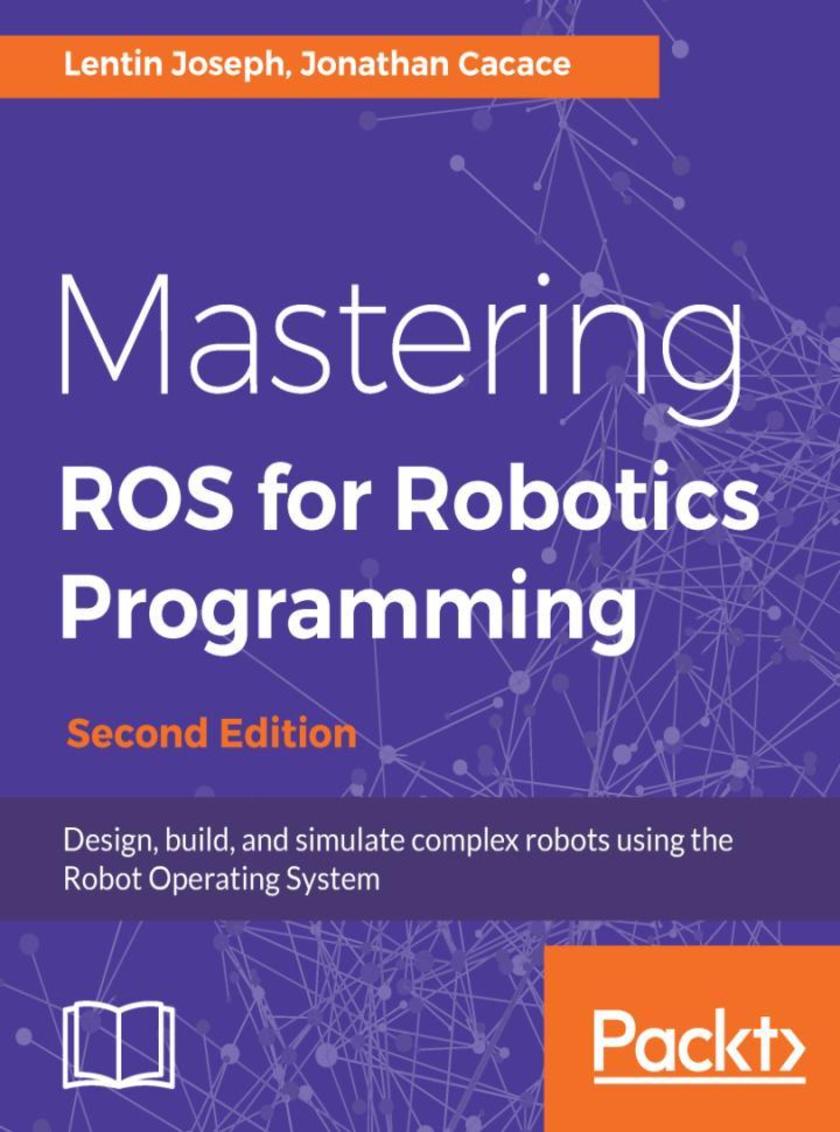
Mastering ROS for Robotics Programming - Second Edition
¥90.46
Discover best practices and troubleshooting solutions when working on ROS About This Book ? Develop complex robotic applications using ROS to interface robot manipulators and mobile robots ? Gain insight into autonomous navigation in mobile robots and motion planning in robot manipulators ? Discover best practices and troubleshooting solutions Who This Book Is For If you are a robotics enthusiast or researcher who want to learn more about building robot applications using ROS, this book is for you. In order to learn from this book, you should have a basic knowledge of ROS, GNU/Linux, and C++ programming concepts. The book is also excellent for programmers who want to explore the advanced features of ROS. What You Will Learn ? Create a robot model with a seven-DOF robotic arm and a differential wheeled mobile robot ? Work with Gazebo and V-REP robotic simulator ? Implement autonomous navigation in differential drive robots using SLAM and AMCL packages ? Explore the ROS Pluginlib, ROS nodelets, and Gazebo plugins ? Interface I/O boards such as Arduino, robot sensors, and high-end actuators ? Simulate and motion plan an ABB and universal arm using ROS Industrial ? Explore the latest version of the ROS framework ? Work with the motion planning of a seven-DOF arm using MoveIt! In Detail In this day and age, robotics has been gaining a lot of traction in various industries where consistency and perfection matter. Automation is achieved via robotic applications and various platforms that support robotics. The Robot Operating System (ROS) is a modular software platform to develop generic robotic applications. This book focuses on the most stable release of ROS (Kinetic Kame), discusses advanced concepts, and effectively teaches you programming using ROS. We begin with aninformative overview of the ROS framework, which will give you a clear idea of how ROS works. During the course of this book, you’ll learn to build models of complex robots, and simulate and interface the robot using the ROS MoveIt! motion planning library and ROS navigation stacks. Learn to leverage several ROS packages to embrace your robot models. After covering robot manipulation and navigation, you’ll get to grips with the interfacing I/O boards, sensors, and actuators of ROS. Vision sensors are a key component of robots, and an entire chapter is dedicated to the vision sensor and image elaboration, its interface in ROS and programming. You’ll also understand the hardware interface and simulation of complex robots to ROS and ROS Industrial. At the end of this book, you’ll discover the best practices to follow when programming using ROS. Style and approach This is a simplified guide to help you learn and master advanced topics in ROS using hands-on examples.
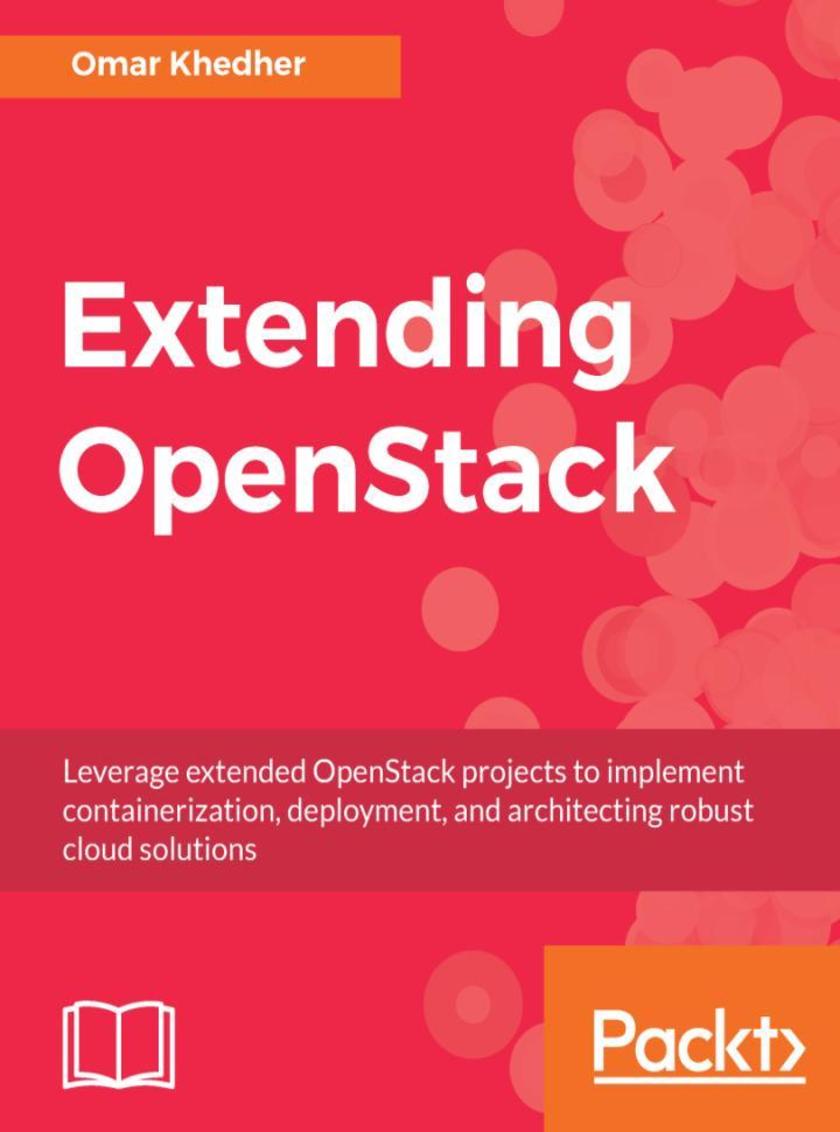
Extending OpenStack
¥73.02
Discover new opportunities to empower your private cloud by making the most of the OpenStack universe About This Book ? This practical guide teaches you how to extend the core functionalities of OpenStack ? Discover OpenStack's flexibility by writing custom applications and network plugins ? Deploy a containerized environment in OpenStack through a hands-on and example-driven approach Who This Book Is For This book is for system administrators, cloud architects, and developers who have experience working with OpenStack and are ready to step up and extend its functionalities. A good knowledge of basic OpenStack components is required. In addition, familiarity with Linux boxes and a good understanding of network and virtualization jargon is required. What You Will Learn ? Explore new incubated projects in the OpenStack ecosystem and see how they work ? Architect your OpenStack private cloud with extended features of the latest versions ? Consolidate OpenStack authentication in your large infrastructure to avoid complexity ? Find out how to expand your computing power in OpenStack on a large scale ? Reduce your OpenStack storage cost management by taking advantage of external tools ? Provide easy, on-demand, cloud-ready applications to developers using OpenStack in no time ? Enter the big data world and find out how to launch elastic jobs easily in OpenStack ? Boost your extended OpenStack private cloud performance through real-world scenarios In Detail OpenStack is a very popular cloud computing platform that has enabled several organizations during the last few years to successfully implement their Infrastructure as a Service (IaaS) platforms. This book will guide you through new features of the latest OpenStack releases and how to bring them into production straightaway in an agile way. It starts by showing you how to expand your current OpenStack setup and how to approach your next OpenStack Data Center generation deployment. You will discover how to extend your storage and network capacity and also take advantage of containerization technology such as Docker and Kubernetes in OpenStack. Additionally, you'll explore the power of big data as a Service terminology implemented in OpenStack by integrating the Sahara project. This book will teach you how to build Hadoop clusters and launch jobs in a very simple way. Then you'll automate and deploy applications on top of OpenStack. You will discover how to write your own plugin in the Murano project. The final part of the book will go through best practices for security such as identity, access management, and authentication exposed by Keystone in OpenStack. By the end of this book, you will be ready to extend and customize your private cloud based on your requirements. Style and approach This guide is filled with practical scenarios on how to extend and enhance OpenStack's functionality. We will be covering various installation and configuration platforms along with a focus on plugins and extending OpenStack's core functionalities.

Fixing Bad UX Designs
¥73.02
A practical guide filled with case studies and easy solutions to solve the most common user experience issues About This Book ? Understand and fix the pain points of a bad UX design to ensure greater customer satisfaction. ? Correct UX issues at various stages of a UX Design with the help of different methodologies for fixing bad UXs ? See best practices and established principles in UX with case studies illustrating these practices and principles Who This Book Is For This book is for anyone confronted with a poorly designed UX. It is ideal for UX professionals who want to solve problems with existing UX designs, and UX designers who want to enhance their designs or analyze and rectify where they went wrong. What You Will Learn ? Learn about ROI and metrics in UX ? Understand the importance of getting stakeholders involved ? Learn through real cases how to fix bad UX ? Identify and fix UX issues using different methodologies ? Learn how to turn insights and finding into practical UX solutions ? Learn to validate, test and measure the UX solutions implemented ? Learn about UX refactoring In Detail Have your web applications been experiencing more hits and less conversions? Are bad designs consuming your time and money? This book is the answer to these problems. With intuitive case studies, you’ll learn to simplify, fix, and enhance some common, real-world application designs. You’ll look at the common issues of simplicity, navigation, appearance, maintenance, and many more. The challenge that most UX designers face is to ensure that the UX is user-friendly. In this book, we address this with individual case studies starting with some common UX applications and then move on to complex applications. Each case study will help you understand the issues faced by a bad UX and teach you to break it down and fix these problems. As we progress, you’ll learn about the information architecture, usability testing, iteration, UX refactoring, and many other related features with the help of various case studies. You’ll also learn some interesting UX design tools with the projects covered in the book. By the end of the book, you’ll be armed with the knowledge to fix bad UX designs and to ensure great customer satisfaction for your applications. Style and approach This book takes a practical approach, with case studies, best practices, and practical solutions to bad design
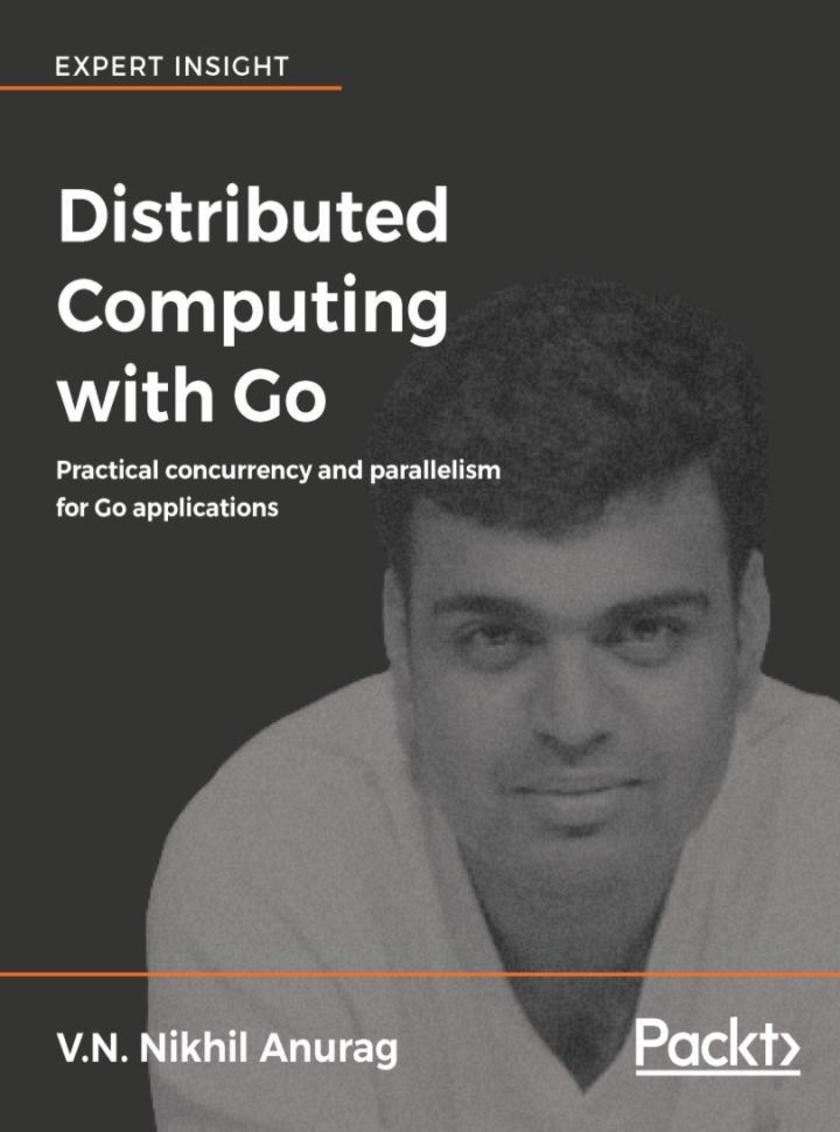
Distributed Computing with Go
¥73.02
A tutorial leading the aspiring Go developer to full mastery of Golang's distributed features. About This Book ? This book provides enough concurrency theory to give you a contextual understanding of Go concurrency ? It gives weight to synchronous and asynchronous data streams in Golang web applications ? It makes Goroutines and Channels completely familiar and natural to Go developers Who This Book Is For This book is for developers who are familiar with the Golang syntax and have a good idea of how basic Go development works. It would be advantageous if you have been through a web application product cycle, although it’s not necessary. What You Will Learn ? Gain proficiency with concurrency and parallelism in Go ? Learn how to test your application using Go's standard library ? Learn industry best practices with technologies such as REST, OpenAPI, Docker, and so on ? Design and build a distributed search engine ? Learn strategies on how to design a system for web scale In Detail Distributed Computing with Go gives developers with a good idea how basic Go development works the tools to fulfill the true potential of Golang development in a world of concurrent web and cloud applications. Nikhil starts out by setting up a professional Go development environment. Then you’ll learn the basic concepts and practices of Golang concurrent and parallel development. You’ll find out in the new few chapters how to balance resources and data with REST and standard web approaches while keeping concurrency in mind. Most Go applications these days will run in a data center or on the cloud, which is a condition upon which the next chapter depends. There, you’ll expand your skills considerably by writing a distributed document indexing system during the next two chapters. This system has to balance a large corpus of documents with considerable analytical demands. Another use case is the way in which a web application written in Go can be consciously redesigned to take distributed features into account. The chapter is rather interesting for Go developers who have to migrate existing Go applications to computationally and memory-intensive environments. The final chapter relates to the rather onerous task of testing parallel and distributed applications, something that is not usually taught in standard computer science curricula. Style and approach Distributed Computing with Go takes you through a series of carefully graded tutorials, building ever more sophisticated applications.
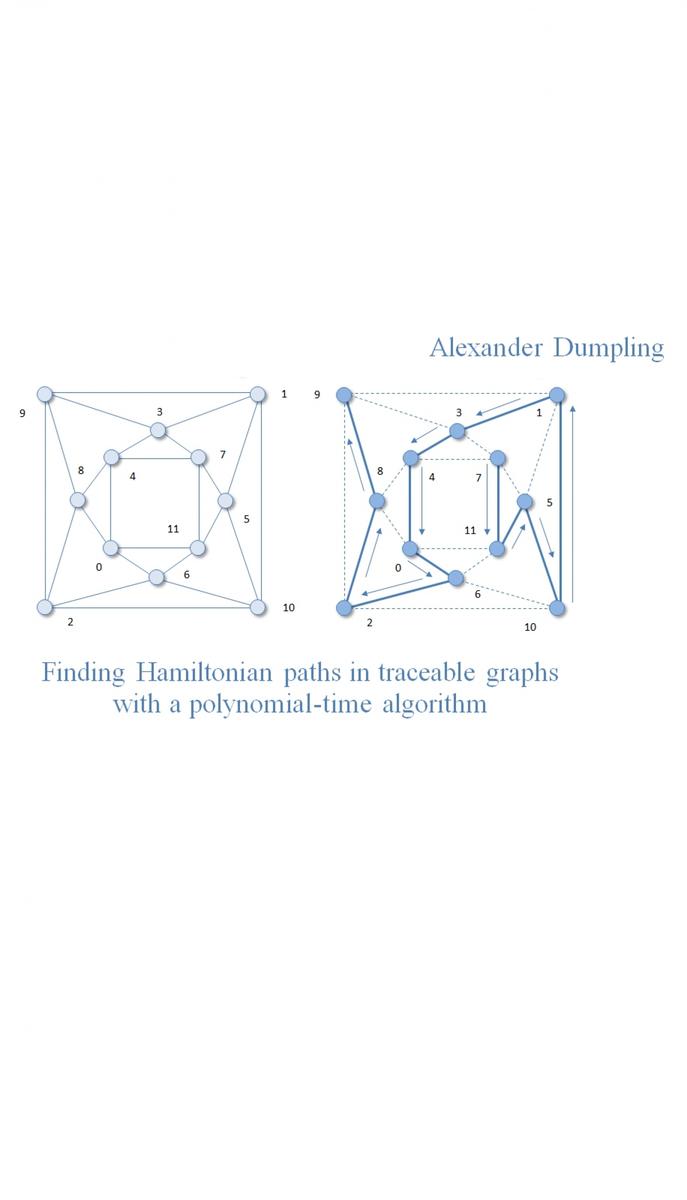
Finding Hamiltonian paths in traceable graphs with a polynomial-time algorithm
¥1635.00
Finding Hamiltonian paths in traceable graphs with a polynomial-time algorithm

16 conferin?e despre traum?
¥81.67
Mivel az informatika egyre inkább átsz?vi életünket, a szoftverek min?ségével kapcsolatos elvárások egyre magasabbak. Egy szoftver el?állítása azonban nem csak programozásból áll, és a programozóktól sem lehet elvárni emberfeletti képességeket, a megrendel? el nem mondott elképzelésének t?kéletesen megfelel?, teljesen hibamentes munkát, mivel csak az nem hibázik, aki nem is dolgozik. Az informatika világában a szoftvertesztel?k azok, akik a szoftverek min?ségéért dolgoznak. A szoftvertesztel?k?n óriási felel?sség nyugszik és folyamatosan elvárások kereszttüzében kell helytállniuk. Mégis, szoftvertesztelés nélkül a legt?bb szoftver el sem jutna a felhasználókig, vagy ha igen, akkor megjelenésük botrányokkal, valamint óriási anyagi és erk?lcsi veszteségekkel járna együtt, a rengeteg fel nem tárt programhiba miatt. Szoftvertesztelésre és tesztel?kre ezért mindenképp szükség van. K?nyvünk a professzionális szoftvertesztelés alapjaival ismerteti meg az olvasót, számos gyakorlati példával f?szerezve, mell?zve a száraz, pusztán technikai megk?zelítés? leírásokat, kezdve a szoftvertesztelés általános bemutatásától, a fogalmak ismertetését?l, majd részleteiben tárgyalva a szoftvertesztelést és annak helyét a fejlesztési folyamatokban. Segítségével jó adag gyakorlati ismerettel vértezhetjük fel magunkat, melynek során valódi, a tesztelést támogató alkalmazásokat ismerhetünk meg, biztos alapot nyújtva a szoftvertesztelésben elhelyezked? leend? és gyakorló szakembereknek a mindennapi munkájukhoz. A szoftverteszteléssel most ismerked? szakembereknek és laikusoknak kimondottan hasznos lehet ez a k?nyv, de fejleszt?k és cégvezet?k számára is tartogat hasznos információkat, melyek segítségével bevezethetik, illetve hatékonyabbá tehetik a szoftvertesztelést munkájuk során.
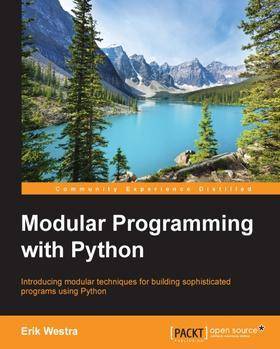
Modular Programming with Python
¥297.10
Introducing modular techniques for building sophisticated programs using PythonAbout This Book·The book would help you develop succinct, expressive programs using modular deign·The book would explain best practices and common idioms through carefully explained and structured examples·It will have broad appeal as far as target audience is concerned and there would be take away for all beginners to PythonWho This Book Is ForThis book is intended for beginner to intermediate level Python programmers who wish to learn how to use modules and packages within their programs. While readers must understand the basics of Python programming, no knowledge of modular programming techniques is required.What You Will Learn·Learn how to use modules and packages to organize your Python code·Understand how to use the import statement to load modules and packages into your program·Use common module patterns such as abstraction and encapsulation to write better programs·Discover how to create self-testing Python packages·Create reusable modules that other programmers can use·Learn how to use GitHub and the Python Package Index to share your code with other people·Make use of modules and packages that others have written·Use modular techniques to build robust systems that can handle complexity and changing requirements over timeIn DetailPython has evolved over the years and has become the primary choice of developers in various fields. The purpose of this book is to help readers develop readable, reliable, and maintainable programs in Python.Starting with an introduction to the concept of modules and packages, this book shows how you can use these building blocks to organize a complex program into logical parts and make sure those parts are working correctly together.Using clearly written, real-world examples, this book demonstrates how you can use modular techniques to build better programs. A number of common modular programming patterns are covered, including divide-and-conquer, abstraction, encapsulation, wrappers and extensibility. You will also learn how to test your modules and packages, how to prepare your code for sharing with other people, and how to publish your modules and packages on GitHub and the Python Package Index so that other people can use them. Finally, you will learn how to use modular design techniques to be a more effective programmer.Style and approachThis book will be simple and straightforward, focusing on imparting learning through a wide array of examples that the readers can put into use as they read through the book. They should not only be able to understand the way modules help in improving development, but they should also be able to improvise on their techniques of writing concise and effective code.
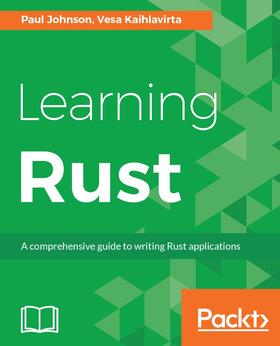
Learning Rust:A comprehensive guide to writing Rust applications
¥334.25
Start building fast and robust applications with the power of Rust by your sideAbout This Book·Get started with the language to build scalable and high performance applications·This book will help C#/C++ developers gain better performance and memory management·Discover the power of Rust when developing concurrent applications for large and scalable softwareWho This Book Is ForThe book is for absolute beginners to Rust, who want to build high performance, concurrent applications for their projects. It is suitable for developers who have a basic knowledge of programming and developers who are using the C#/C++ language to write their applications. No knowledge of Rust is expected.What You Will Learn·Set up Rust for Windows, Linux, and OS X·Write effective code using Rust·Expand your Rust applications using libraries·Interface existing non-Rust libraries with your Rust applications·Use the standard library within your applications·Understand memory management within Rust and speed efficiency when passing variables·Create more complex data types·Study concurrency in Rust with multi-threaded applications and sync threading techniques to improve the performance of an application problemIn DetailRust is a highly concurrent and high performance language that focuses on safety and speed, memory management, and writing clean code. It also guarantees thread safety, and its aim is to improve the performance of existing applications. Its potential is shown by the fact that it has been backed by Mozilla to solve the critical problem of concurrency.Learning Rust will teach you to build concurrent, fast, and robust applications. From learning the basic syntax to writing complex functions, this book will is your one stop guide to get up to speed with the fundamentals of Rust programming. We will cover the essentials of the language, including variables, procedures, output, compiling, installing, and memory handling.You will learn how to write object-oriented code, work with generics, conduct pattern matching, and build macros. You will get to know how to communicate with users and other services, as well as getting to grips with generics, scoping, and more advanced conditions. You will also discover how to extend the compilation unit in Rust.By the end of this book, you will be able to create a complex application in Rust to move forward with.Style and approachThis comprehensive book will focus on the Rust syntax, functions, data types, and conducting pattern matching for programmers. It is divided into three parts and each part of the book has an objective to enable the readers to create their own applications at an appropriate level, ultimately towards creating complex applications.

RESTful Web API Design with Node.js - Second Edition
¥222.81
Design and implement efficient RESTful solutions with this practical hands-on guideAbout This Book·Create a fully featured RESTful API solution from scratch.·Learn how to leverage Node.JS, Express, MongoDB and NoSQL datastores to give an extra edge to your REST API design.·Use this practical guide to integrate MongoDB in your Node.js application.Who This Book Is ForThe ideal target audience for this book is web developers who have some experience with RESTful services. Familiarity with basic JavaScript programming techniques is required. No prior experience with Node.JS or Express.js is required.What You Will Learn·Install, develop, and test your own Node.js user modules·Comprehend the differences between an HTTP and a RESTful application·Optimize RESTful service URI routing with best practices·Eliminate third-party dependencies in your tests with mocking·Learn about NoSQL data stores and integrate MongoDB in your Node.js application with Mongoose·Secure your services with NoSQL database integration within Node.js applications·Enrich your development skills to create scalable, server-side, RESTful applications based on the Node.js platformIn DetailIn this era of cloud computing, every data provisioning solution is built in a scalable and fail-safe way. Thus, when building RESTful services, the right choice for the underlying platform is vital. Node.js, with its asynchronous, event-driven architecture, is exactly the right choice to build RESTful APIs.This book will help you enrich your development skills to create scalable, server-side, RESTful applications based on the Node.js platform.Starting with the fundamentals of REST, you will understand why RESTful web services are better data provisioning solution than other technologies. You will start setting up a development environment by installing Node.js, Express.js, and other modules. Next, you will write a simple HTTP request handler and create and test Node.js modules using automated tests and mock objects. You will then have to choose the most appropriate data storage type, having options between a key/value or document data store, and also you will implement automated tests for it. This module will evolve chapter by chapter until it turns into a full-fledged and secure Restful service.Style and approachCreate state of the art RESTful API solutions leveraging Node.JS 4.x.
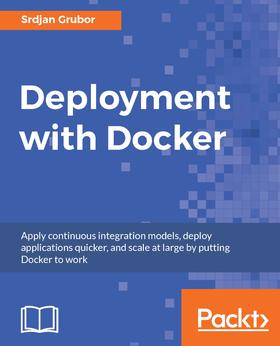
Deployment with Docker
¥297.10
A practical guide to rapidly and efficiently mastering Docker containers, along with tips and tricks learned in the field.About This Book·Use Docker containers, horizontal node scaling, modern orchestration tools (Docker Swarm, Kubernetes, and Mesos) and Continuous Integration/Continuous Delivery to manage your infrastructure.·Increase service density by turning often-idle machines into hosts for numerous Docker services.·Learn what it takes to build a true container infrastructure that is scalable, reliable, and resilient in the face of increased complexities from using container infrastructures.·Find out how to identify, debug, and mitigate most real-world, undocumented issues when deploying your own Docker infrastructure.·Learn tips and tricks of the trade from existing Docker infrastructures running in production environments.Who This Book Is ForThis book is aimed at system administrators, developers, DevOps engineers, and software engineers who want to get concrete, hands-on experience deploying multi-tier web applications and containerized microservices using Docker. This book is also for anyone who has worked on deploying services in some fashion and wants to take their small-scale setups to the next level (or simply to learn more about the process).What You Will Learn·Set up a working development environment and create a simple web service to demonstrate the basics·Learn how to make your service more usable by adding a database and an app server to process logic·Add resilience to your services by learning how to horizontally scale with a few containers on a single node·Master layering isolation and messaging to simplify and harden the connectivity between containers·Learn about numerous issues encountered at scale and their workarounds, from the kernel up to code versioning·Automate the most important parts of your infrastructure with continuous integrationIn DetailDeploying Docker into production is considered to be one of the major pain points in developing large-scale infrastructures, and the documentation available online leaves a lot to be desired. With this book, you will learn everything you wanted to know to effectively scale your deployments globally and build a resilient, scalable, and containerized cloud platform for your own use.The book starts by introducing you to the containerization ecosystem with some concrete and easy-to-digest examples; after that, you will delve into examples of launching multiple instances of the same container. From there, you will cover orchestration, multi-node setups, volumes, and almost every relevant component of this new approach to deploying services. Using intertwined approaches, the book will cover battle-tested tooling, or issues likely to be encountered in real-world scenarios, in detail. You will also learn about the other supporting components required for a true PaaS deployment and discover common options to tie the whole infrastructure together.At the end of the book, you learn to build a small, but functional, PaaS (to appreciate the power of the containerized service approach) and continue to explore real-world approaches to implementing even larger global-scale services.Style and approachThis in-depth learning guide shows you how to deploy your applications in production using Docker (from the basic steps to advanced concepts) and how to overcome challenges in Docker-based infrastructures. The book also covers practical use-cases in real-world examples, and provides tips and tricks on the various topics.
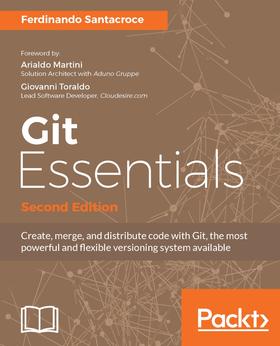
Git Essentials - Second Edition
¥259.95
Dive and explore into the latest addons of the latest Git.About This Book·Master all the basic concepts of Git to protect your code and make it easier to evolve·Use Git proficiently, and learn how to resolve day-by-day challenges easily·This step-by-step guide is packed with examples to help you learn and work with Git's internalsWho This Book Is ForIf you are a software developer with little or no experience of versioning systems, or you are familiar with other centralized versioning systems, then this book is for you.If you have experience in server and system management and need to broaden your use of Git from a DevOps perspective, this book contains everything you need.What You Will Learn·Master Git fundamentals·Be able to "visualize," even with the help of a valid GUI tool·Write principal commands in a shell·Figure out the right strategy to run change your daily work with few or no annoyances·Explore the tools used to migrate to Git from the Subversion versioning system without losing your development history·Plan new projects and repositories with ease, using online services, or local network resourcesIn DetailSince its inception, Git has attracted skilled developers due to its robust, powerful, and reliable features. Its incredibly fast branching ability transformed a piece of code from a niche tool for Linux Kernel developers into a mainstream distributed versioning system. Like most powerful tools, Git can be hard to approach since it has a lot of commands, subcommands, and options that easily confuse newcomers.The 2nd edition of this very successful book will help you overcome this fear and become adept in all the basic tasks in Git. Building upon the success of the first book, we start with a brief step-by-step installation guide; after this, you'll delve into the essentials of Git. For those of you who have bought the first edition, this time we go into internals in far greater depth, talking less about theory and using much more practical examples.The book serves as a primer for topics to follow, such as branching and merging, creating and managing a GitHub personal repository, and fork and pull requests. You'll then learn the art of cherry-picking, taking only the commits you want, followed by Git blame. Finally, we'll see how to interoperate with a Subversion server, covering the concepts and commands needed to convert an SVN repository into a Git repository.To conclude, this is a collection of resources, links, and appendices to satisfy even the most curious.Style and approachThis short guide will help you understand the concepts and fundamentals of GIT is a step-by-step manner.
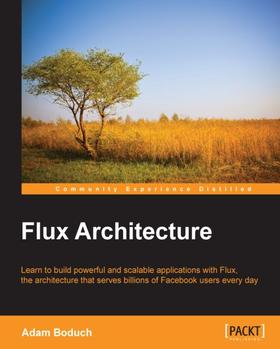
Flux Architecture
¥334.25
Learn to build powerful and scalable applications with Flux, the architecture that serves billions of Facebook users every dayAbout This Book·This the first resource dedicated to the new architectural pattern that powers Facebook·You'll learn all the tips and tricks you need to get the most out of Flux·Filled with practical, hands-on samples, you'll not only understand how Flux works, but will be able to start building Flux-powered applications straight away·Written by Adam Boduch, software architect at Virtustream (EMC), and author of JavaScript at Scale, JavaScript Concurrency, and jQuery UI Cookbook for Packt PublishingWho This Book Is ForAre you trying to use React, but are struggling to get your head around Flux? Maybe you're tired of MV* spaghetti code at scale? Do you find yourself asking what the Flux?!Flux Architecture will guide you through everything you need to understand the Flux pattern, and design and build powerful web applications that rely on the Flux architecture.You don't need to know what Flux is or how it works to read along with the book. No knowledge of Flux's partner technology, ReactJS, is necessary to follow along, but it is recommended that you have a good working knowledge of JavaScript.What You Will Learn·Understand the Flux pattern and how it will impact your React applications·Build real-world applications that rely on Flux·Handle asynchronous actions in your application·Implement immutable stores with Immutable.js·Replace React.js with alternate View components such as jQuery and Handlebars·Test and benchmark your Flux architecture using Jest—Facebook's enhancement of the Jasmine libraryIn DetailWhilst React has become Facebook's poster-child for clean, complex, and modern web development, it has quietly been underpinned by its simplicity. It's just a view. The real beauty in React is actually the architectural pattern that handles data in and out of React applications: Flux. With Flux, you're able to build data-rich applications that engage your users, and scale to meet every demand. It is a key part of the Facebook technology stack that serves billions of users every day.This book will start by introducing the Flux pattern and help you get an understanding of what it is and how it works. After this, we'll build real-world React applications that highlight the power and simplicity of Flux in action. Finally, we look at the landscape of Flux and explore the Alt and Redux libraries that make React and Flux developments easier.Filled with fully-worked examples and code-first explanations, by the end of the book, you'll not only have a rock solid understanding of the architecture, but will be ready to implement Flux architecture in anger.Style and approachThis book is filled with practical, hands-on examples. You'll not only understand how Flux works, but will be able to start building Flux-powered applications straight away.
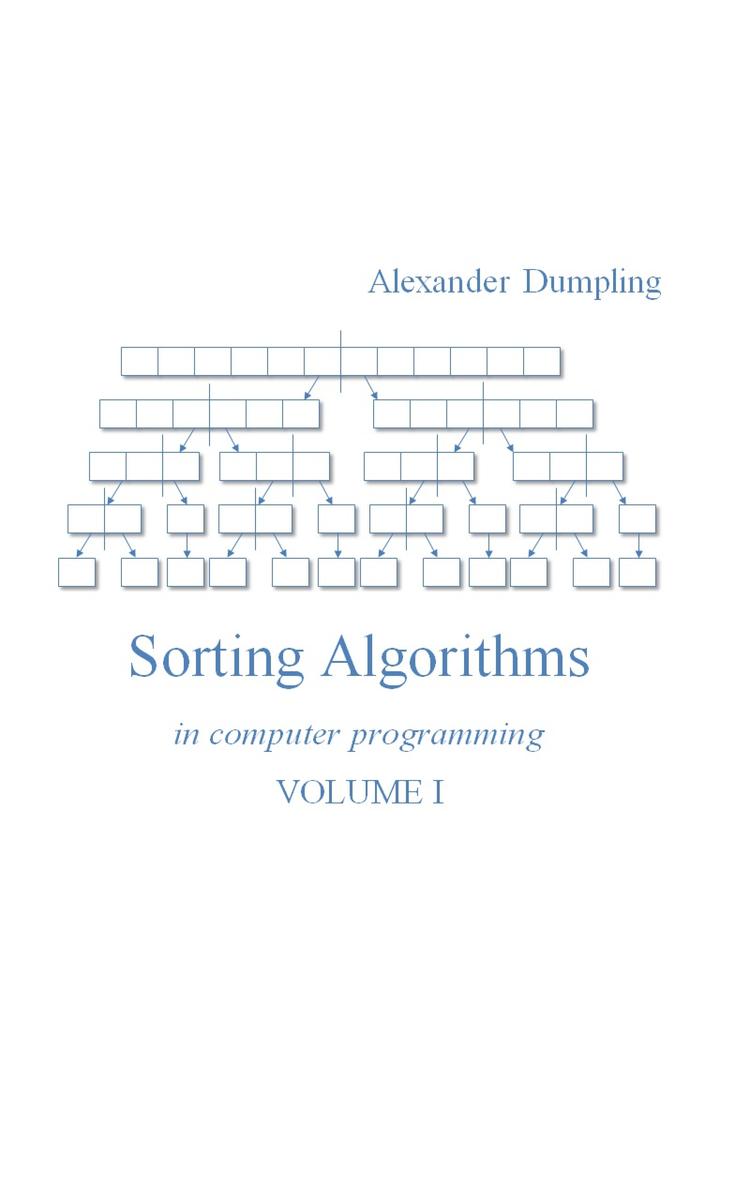
Sorting Algorithms In Computer Programming: Volume 1
¥163.50
Sorting Algorithms In Computer Programming: Volume 1

Blockchain: The complete guide to understanding Blockchain Technology for beginn
¥24.44
Blockchain: The complete guide to understanding Blockchain Technology for beginners in record time

50 most powerful Excel Functions and Formulas
¥24.44
50 most powerful Excel Functions and Formulas

The Beginner’s Short Guide to Pinterest: How to Promote Products on Pinterest
¥8.09
The Beginner’s Short Guide to Pinterest: How to Promote Products on Pinterest
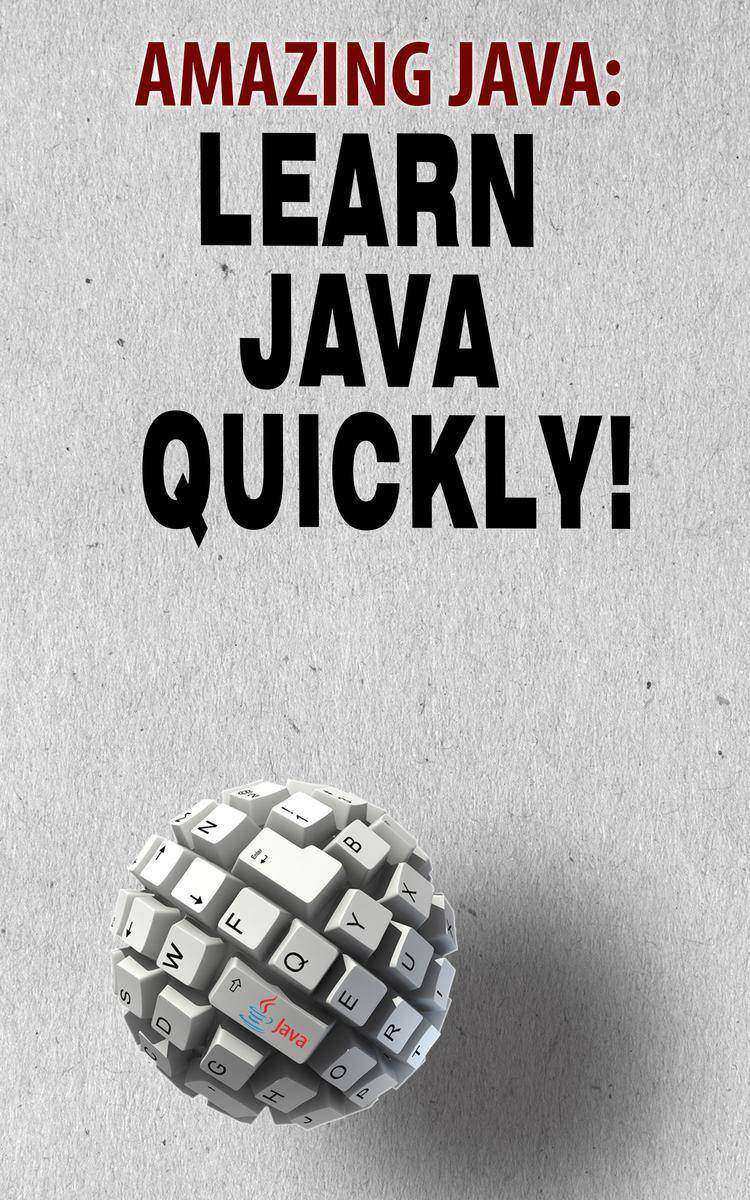
Amazing Java: Learn Java Quickly
¥24.44
Amazing Java: Learn Java Quickly

15 Most Powerful Features Of Pivot Tables: Save Your Time With MS Excel
¥24.44
15 Most Powerful Features Of Pivot Tables: Save Your Time With MS Excel

Python: Advanced Guide to Programming Code with Python
¥24.44
Python: Advanced Guide to Programming Code with Python




 购物车
购物车 个人中心
个人中心



